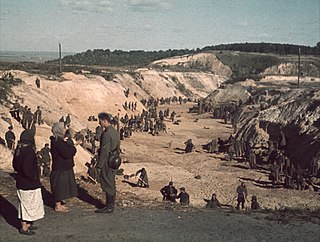
Babi Yar or Babyn Yar is a ravine in the Ukrainian capital Kyiv and a site of massacres carried out by Nazi Germany's forces during its campaign against the Soviet Union in World War II. The first and best documented of the massacres took place on 29–30 September 1941, in which some 33,771 Jews were murdered. Other victims of massacres at the site included Soviet prisoners of war, communists and Romani people. It is estimated that a total of between 100,000 and 150,000 people were murdered at Babi Yar during the German occupation.
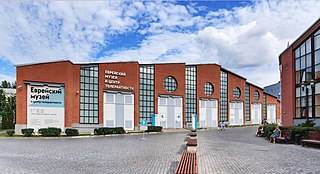
The history of the Jews in Russia and areas historically connected with it goes back at least 1,500 years. Jews in Russia have historically constituted a large religious and ethnic diaspora; the Russian Empire at one time hosted the largest population of Jews in the world. Within these territories, the primarily Ashkenazi Jewish communities of many different areas flourished and developed many of modern Judaism's most distinctive theological and cultural traditions, while also facing periods of antisemitic discriminatory policies and persecution, including violent pogroms. Some have described a "renaissance" in the Jewish community inside Russia since the beginning of the 21st century; however, the Russian Jewish population has experienced precipitous decline since the dissolution of the USSR which continues to this day, although it is still among the largest in Europe.
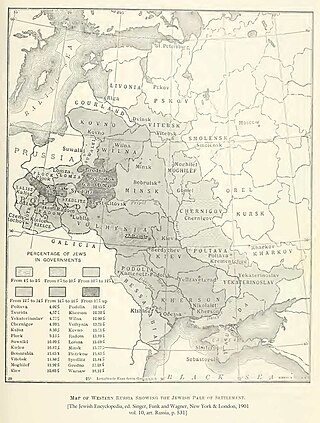
The Pale of Settlement was a western region of the Russian Empire with varying borders that existed from 1791 to 1917 in which permanent residency by Jews was allowed and beyond which Jewish residency, permanent or temporary, was mostly forbidden. Most Jews were still excluded from residency in a number of cities within the Pale as well. A few Jews were allowed to live outside the area, including those with university education, the ennobled, members of the most affluent of the merchant guilds and particular artisans, some military personnel and some services associated with them, including their families, and sometimes their servants. The archaic English term pale is derived from the Latin word palus, a stake, extended to mean the area enclosed by a fence or boundary.
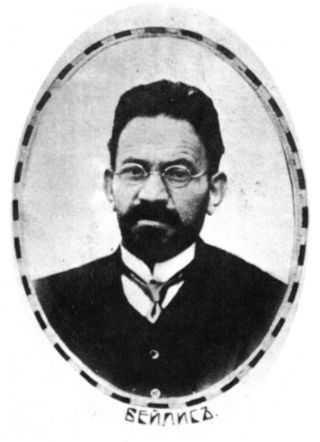
Menahem Mendel Beilis was a Russian Jew accused of ritual murder in Kiev in the Russian Empire in a notorious 1913 trial, known as the "Beilis trial" or the "Beilis affair". Although Beilis was eventually acquitted after a lengthy process, the legal process sparked international criticism of antisemitism in the Russian Empire.

The history of the Jews in Ukraine dates back over a thousand years; Jewish communities have existed in the modern territory of Ukraine from the time of the Kievan Rus'. Important Jewish religious and cultural movements, from Hasidism to Zionism, arose there. According to the World Jewish Congress, the Jewish community in Ukraine constitutes Europe's third-largest and the world's fifth-largest.

Rabbi Moshe Reuven Azman is an Orthodox rabbi in Kyiv Ukraine.
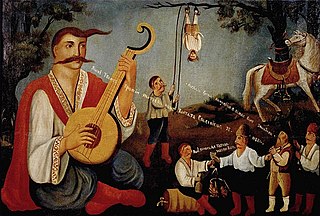
Antisemitism in Ukraine has been a historical issue in the country, particularly in the twentieth century. The history of the Jewish community of the region dates back to the era when ancient Greek colonies existed in it. A third of the Jews of Europe previously lived in Ukraine between 1791 and 1917, within the Pale of Settlement. The large concentration of Jews in this region historically made them an easy target for anti-Jewish actions and pogroms.

The Brodsky Synagogue, also called the Brodsky Choral Synagogue, is an Orthodox Jewish synagogue located in Kyiv, Ukraine.
Babi Yar, a ravine near Kyiv, was the scene of possibly the largest shooting massacre during the Holocaust. After the war, commemoration efforts encountered serious difficulty because of the policy of the Soviet Union. After the dissolution of the Soviet Union, a number of memorials have been erected. The creation of the Babyn Yar Holocaust Memorial Center was initiated in 2016.

Lukianivka, or Lukyanivka, is a historical neighborhood in the northwestern part of the city of Kyiv, the capital of Ukraine. It is situated on the right bank of Dnieper, at a short distance from Babi Yar.
Antisemitism in the Russian Empire included numerous pogroms and the designation of the Pale of Settlement from which Jews were forbidden to migrate into the interior of Russia, unless they converted to the Russian Orthodox state religion.
Poems about Babi Yar commemorate the massacres committed by the Nazi Einsatzgruppe during World War II at Babi Yar, in a ravine located within the present-day Ukrainian capital of Kyiv. In just one of these atrocities – taking place over September 29–30, 1941 – 33,771 Jewish men, women and children were killed in a single Einsatzgruppe operation.
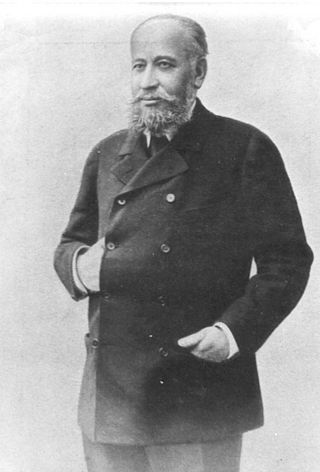
Lazar Izrayilevich Brodsky was a Russian businessman of Jewish origin, sugar magnate, philanthropist and patron.

The following is a timeline of the history of the city of Kyiv, Ukraine.
Alexander (Aaron) Levin is a Ukrainian American businessman and president of a Jewish Community in Kyiv, founding president of the World Forum of Russian-Speaking Jewry and a leader of the US Russian-speaking community.

Babi Yar Holocaust Memorial Center, officially the Foundation and Babyn Yar Holocaust Memorial Center, is an educational institution that documents, explains and commemorates the Babi Yar shootings of September 1941 and aims to broaden and sustain the memory of The Holocaust in Eastern Europe, taking into account geopolitical changes during the 20th century. On September 29, 2016, President of Ukraine Petro Poroshenko, together with public figures and philanthropists, initiated the creation of the first Babi Yar Holocaust Memorial Center. The Memorial Center is planned to be opened in Kyiv, Ukraine, in 2025/26.
Victoria Khiterer is associate professor of history at Millersville University, Pennsylvania, adjunct professor at Gratz College, and a founding member of the Scientific Council of the Babyn Yar Holocaust Memorial Center in Kyiv, Ukraine.

The history of the Jews in Odesa dates to 16th century. Since the modern city's founding in 1795, Odesa has been home to one of the largest population of Jews in what is today Ukraine. They comprised the largest ethno-religious group in the region throughout most of the 19th century and until the mid-20th century.
The history of the Jews in Kharkiv dates to at least 1734, when the Russian Empire allowed Jewish merchants to visit the city to engage in retail and trade. Unusual for major Ukrainian cities, there were no pogroms in Kharkiv during the Tsarist era.
Raphael Rutman — is a Chabad Rabbi and a Shliach ("emissary") of the Lubavitcher Rebbe Menachem Mendel Schneerson. Executive Chairman of the Federation of Jewish Communities of Ukraine.















